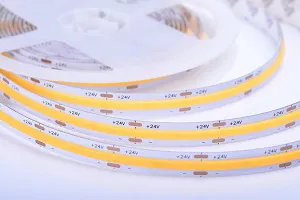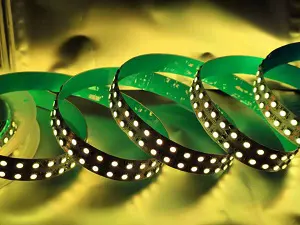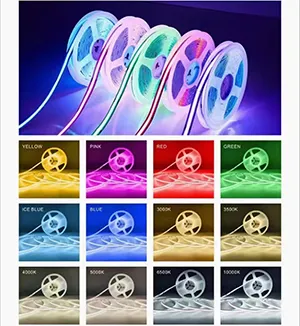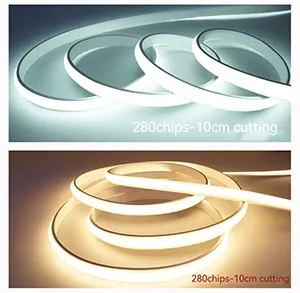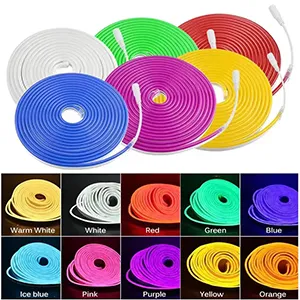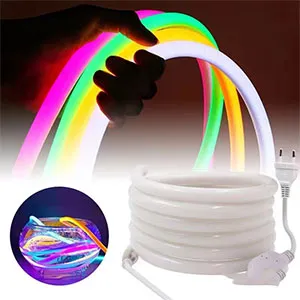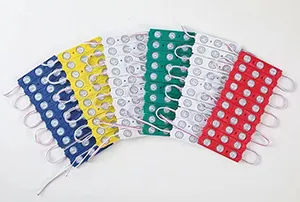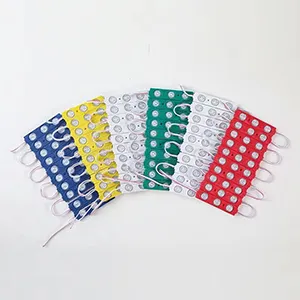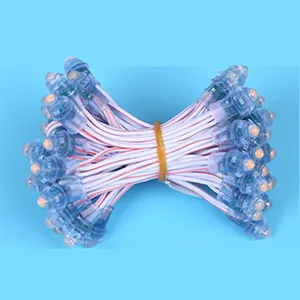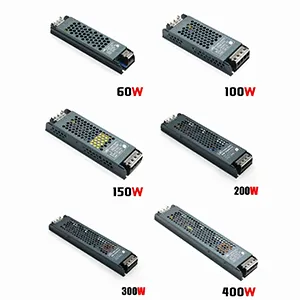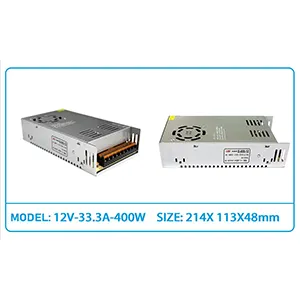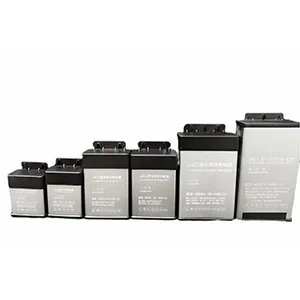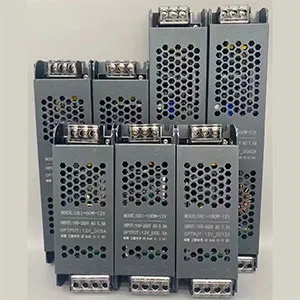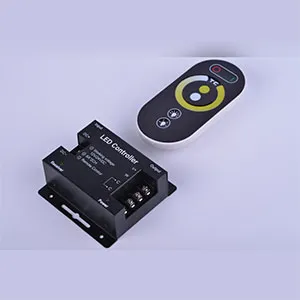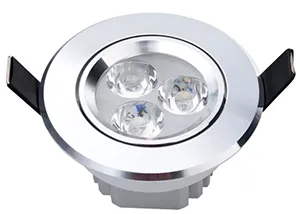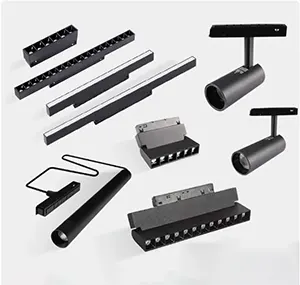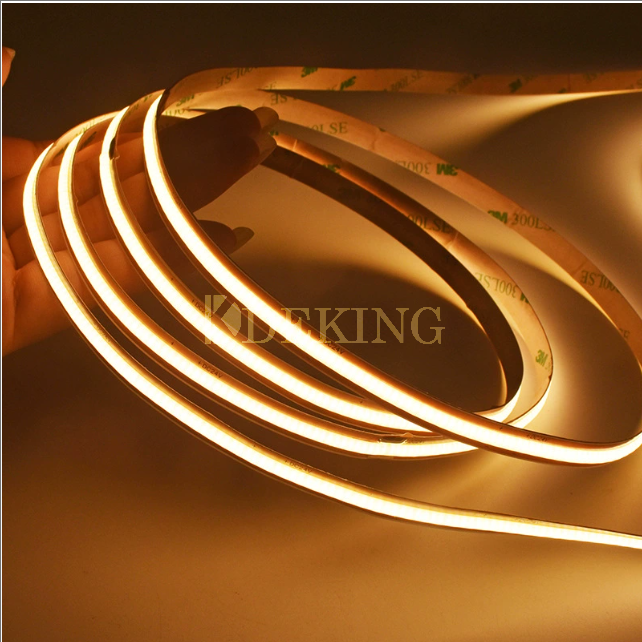The Next Generation of LED Strip Lights: Freely Cuttable for Unlimited Possibilities
In recent years, LED strip lights have become one of the most versatile lighting solutions for both residential and commercial applications. From home decoration to retail displays, from architectural highlights to automotive interiors, strip lighting has transformed the way we think about illumination. However, one long-standing limitation of traditional LED strips has always been the cutting restriction.
Conventional LED strips can only be cut at designated points, usually every few centimeters. While this works for many installations, it often leads to frustrations when a project requires precise lengths. Imagine trying to fit a strip under a shelf or along a staircase, only to realize the nearest cutting mark is too far away, leaving you either with extra overhang or with a gap.
Now, a breakthrough innovation has arrived: freely cuttable LED strip lights. Unlike traditional strips, these advanced products allow you to cut from any position along the strip without being limited by pre-set cutting points. This unique feature opens up endless opportunities for more customized, cleaner, and more efficient lighting solutions.
In this article, we will explore the technology behind freely cuttable LED strip lights, their benefits, key application areas, and why they represent the future of flexible lighting.
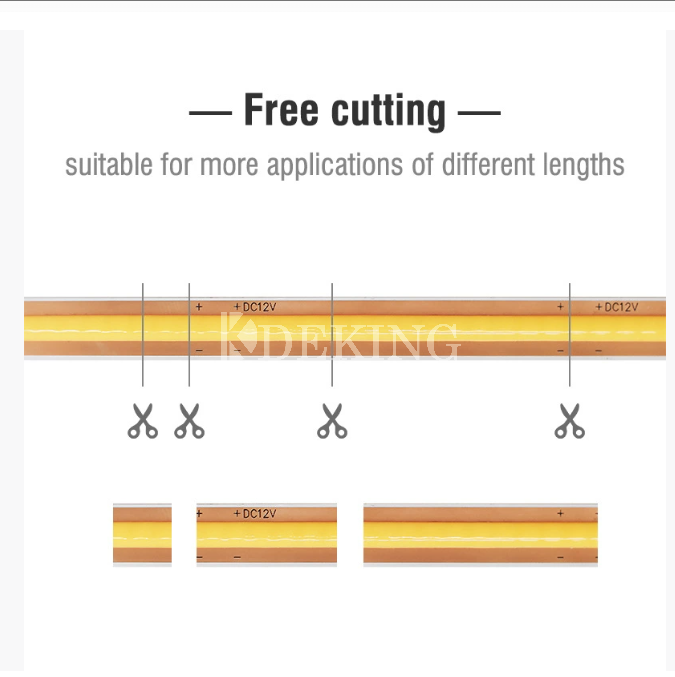
1. What Makes Freely Cuttable LED Strips Different?
The major innovation of freely cuttable LED strips lies in their continuous circuit design. Traditional LED strips group LEDs in small segments, each with its own resistors and circuitry. Cutting in the middle of a segment would break the circuit, rendering part of the strip useless.
Freely cuttable LED strips, on the other hand, use special constant-current IC technology and a continuous flexible PCB design that allows the circuit to remain functional regardless of where you cut. Whether you trim just one centimeter or a longer section, the strip continues to work seamlessly.
In short:
-
Traditional LED strips → Cut only at pre-marked points.
-
Freely cuttable LED strips → Cut anywhere you want.
This simple but powerful difference redefines the concept of flexibility in strip lighting.
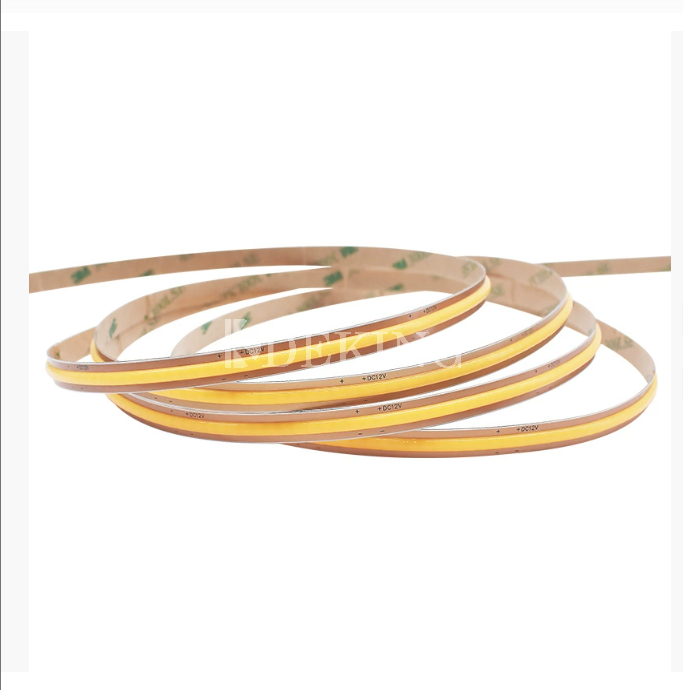
2. The Advantages of Free Cutting
(a) Perfect Length for Every Project
One of the biggest frustrations in lighting installation is dealing with mismatched lengths. With freely cuttable LED strips, you can now achieve a perfect fit every single time. Whether you’re installing under cabinets, inside display cases, or along irregular surfaces, you can trim the strip to the exact length you need—without waste, without gaps, and without compromise.
(b) Cleaner and More Professional Finish
When installers cannot achieve the exact length, they often leave excess strip tucked away or attempt awkward connections. This not only looks unprofessional but can also reduce reliability. Free cutting eliminates the problem, resulting in seamless installations with a clean and polished finish.
(c) Wider Application Scenarios
Because you are no longer limited by cutting points, these strips are suitable for more demanding applications where precision is key. For example:
-
Jewelry showcases requiring millimeter-accurate lengths.
-
Automotive interiors where space is tight.
-
Furniture lighting where visible edges must align perfectly.
(d) Reduced Waste and Cost Savings
Traditional strips often result in leftover pieces that cannot be reused if they are cut incorrectly. With free cutting, you maximize the usage of every strip, minimizing waste and saving on overall costs.
(e) Simplified Installation Process
Installers no longer need to measure around cutting marks or recalculate layouts. Instead, they simply cut the strip exactly where needed. This not only speeds up installation but also reduces errors.
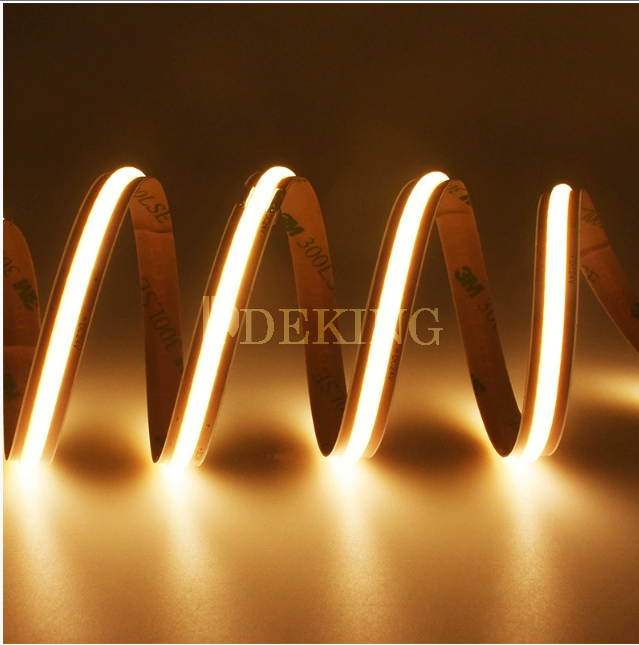
3. Technical Highlights
Freely cuttable LED strips are not only innovative in concept but also in construction. Here are some key technical features that make them stand out:
-
Voltage Options: Typically available in DC12V and DC24V, making them suitable for different installation needs.
-
Continuous COB (Chip-on-Board) Lighting: Many models use COB technology, delivering a smooth and dotless light output.
-
High Flexibility: Thin and bendable PCB materials allow for easy integration into narrow spaces.
-
Consistent Brightness: Advanced current regulation ensures uniform illumination even after cutting at random points.
-
Durability: High-quality copper circuits and protective coatings ensure long-lasting performance.
4. Application Scenarios
The true power of freely cuttable LED strips becomes apparent when we look at real-world applications.
Home Decoration
From kitchens to living rooms, freely cuttable strips make it possible to achieve tailor-fit lighting under cabinets, inside closets, along staircases, or even behind mirrors. No more worrying about uneven edges or mismatched corners.
Retail and Commercial Spaces
Display cases, product shelves, and counters often require precise lighting to highlight merchandise. Freely cuttable strips ensure the light runs smoothly across the entire showcase, creating a professional and attractive presentation.
Architectural and Interior Design
Designers often work with unique dimensions and irregular shapes. With the ability to cut anywhere, they now have the freedom to experiment with bold and creative lighting effects without technical limitations.
Automotive and Transportation
Vehicle interiors, dashboards, and accent lighting demand precision. These strips can be cut to fit exactly into car panels, motorcycles, or even boats, giving a sleek and customized lighting solution.
Industrial and Specialty Uses
Medical equipment, electronic devices, and other specialized tools sometimes require very specific lighting lengths. Freely cuttable strips simplify integration into these applications.
5. Why This Innovation Matters
Lighting has always been about enhancing human environments, and flexibility is one of the key drivers of modern design. The ability to cut LED strips at any point may seem like a small improvement, but it addresses one of the most practical challenges faced by installers and designers for years.
-
For businesses, it means fewer product variations are needed—one roll of freely cuttable strip can serve multiple purposes.
-
For installers, it means faster, easier, and cleaner projects.
-
For end-users, it means more aesthetically pleasing and reliable results.
This innovation not only increases the usability of LED strip lights but also sets a new industry standard for what flexibility should truly mean.
6. Looking Ahead: The Future of LED Strip Lighting
The introduction of freely cuttable LED strips is more than just a product upgrade—it represents the future direction of LED lighting technology. As customers increasingly demand customization and precision, lighting products must evolve to meet those needs.
We can expect to see this technology expand into:
-
Smart LED strips with both free cutting and app control.
-
More voltage and wattage options to suit large-scale projects.
-
Integration with architectural materials for fully hidden lighting solutions.
The potential is enormous, and the ability to freely cut LED strips will likely become a new benchmark feature across the industry.
The lighting industry is driven by innovation, and the arrival of freely cuttable LED strip lights marks a significant step forward. By solving the long-standing limitation of fixed cutting points, this new technology empowers designers, installers, and end-users with unmatched flexibility.
With advantages such as perfect fitting lengths, cleaner finishes, wider applications, reduced waste, and simplified installation, these strips are poised to revolutionize the way we think about LED lighting.
Whether you are a professional installer, a designer, or simply someone looking to enhance your living space, freely cuttable LED strips offer a solution that is not only practical but also inspiring. The future of lighting is not just about brightness—it’s about freedom, precision, and creativity.





